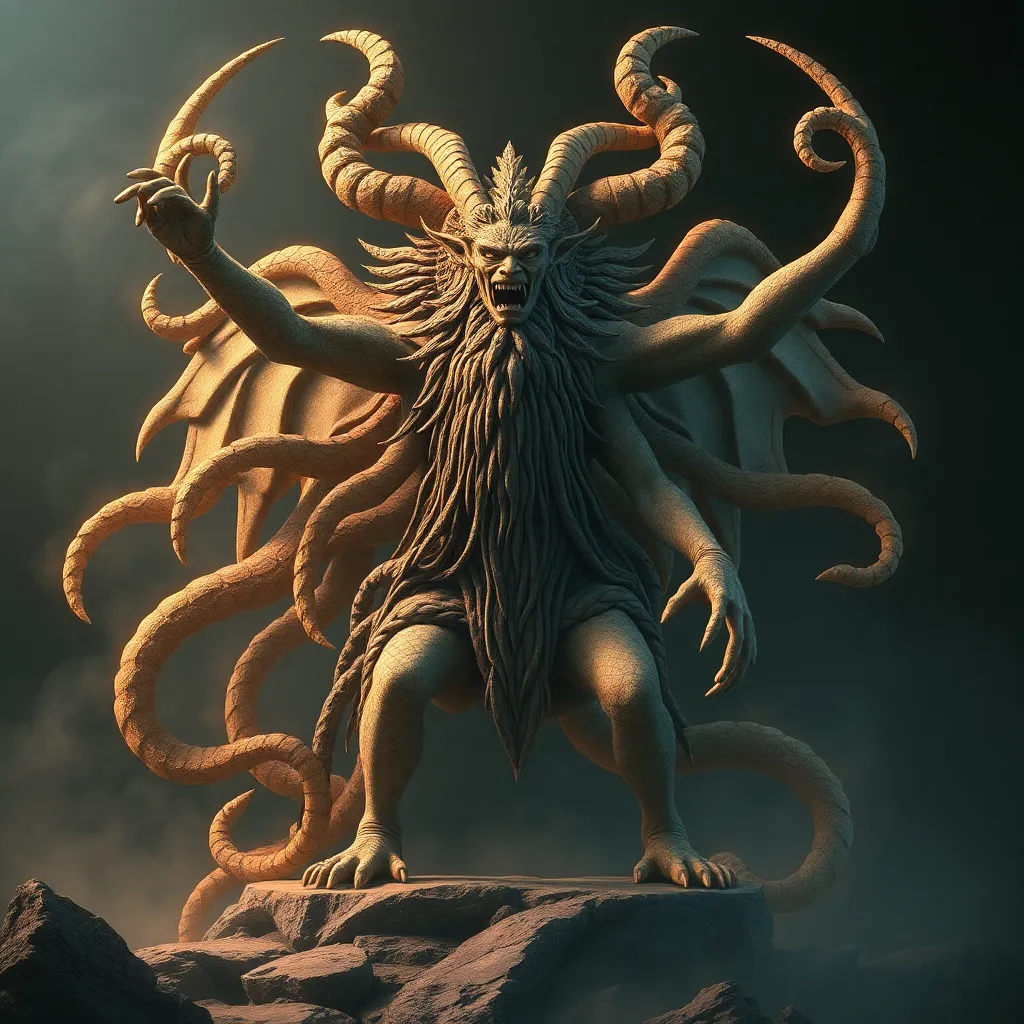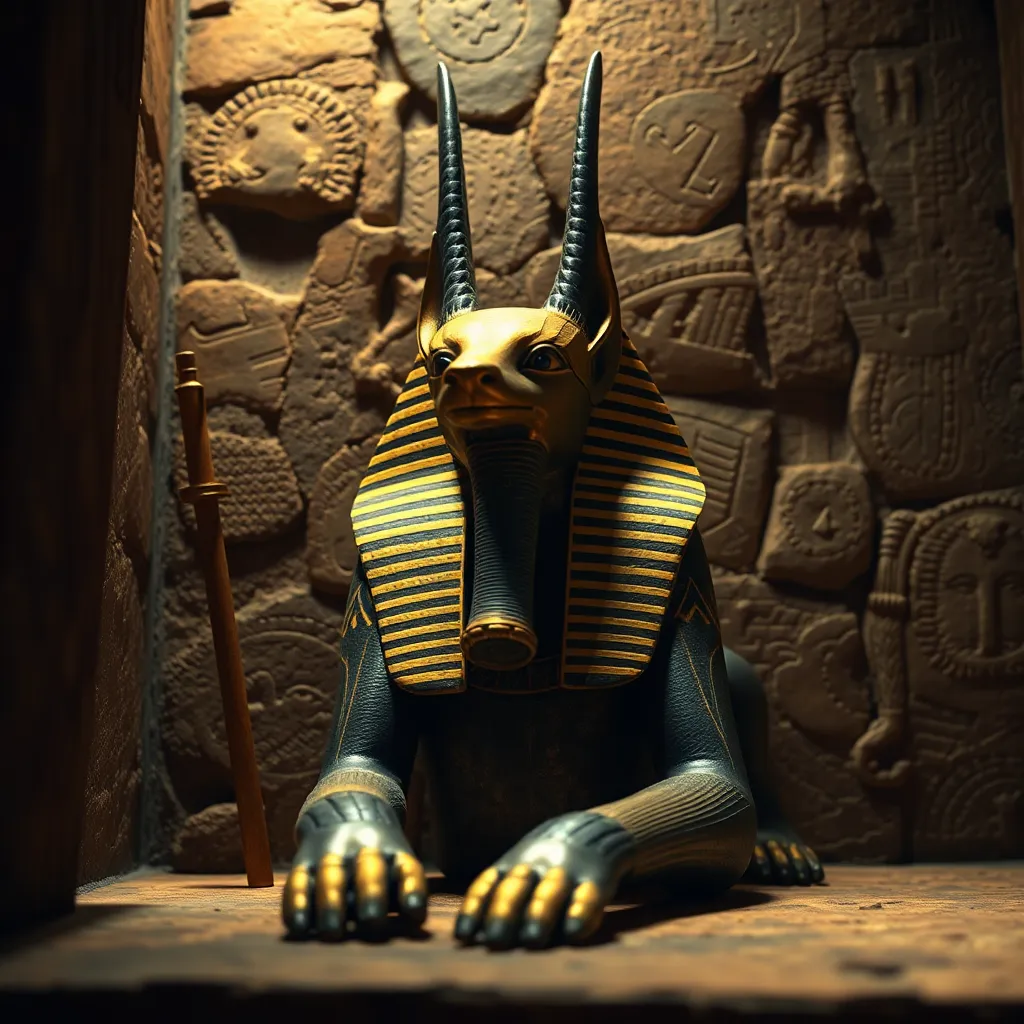The Unholy Union of Man and Monster: Exploring the Ancient Greek Myth of the Gorgon
I. Introduction
The Gorgon is a prominent figure in Greek mythology, symbolizing a terrifying blend of beauty and monstrosity. Traditionally depicted as a creature with hair made of living snakes and a gaze that could turn onlookers to stone, Gorgons represent the duality of attraction and fear. This article delves into the intricacies of the Gorgon myth, examining how it reflects the interplay between humanity and monstrosity, and what it reveals about the human condition.
II. Origins of the Gorgon Myth
The origins of the Gorgon myth can be traced back to ancient Greek culture, where tales of supernatural beings were used to explain natural phenomena, human behavior, and societal norms. The Gorgon myth has evolved over centuries, influenced by various historical contexts and interpretations.
A. Historical context and the evolution of the Gorgon myth
Initially, Gorgons were seen as protective deities, guardians of sacred spaces. Over time, their portrayal shifted from divine protectors to malevolent monsters, particularly in the context of their role in heroic narratives. This transformation reflects broader societal fears and the complexities of gender dynamics in ancient Greece.
B. Key figures in the Gorgon narrative: Medusa, Stheno, and Euryale
- Medusa: The most famous Gorgon, Medusa was once a beautiful maiden who was cursed by Athena, transforming her into a monster as punishment for her beauty and perceived vanity.
- Stheno: Known for her strength, Stheno is often portrayed as the most aggressive of the Gorgons, embodying raw power and ferocity.
- Euryale: The least frequently mentioned, Euryale represents the tragic elements of the Gorgon myth, highlighting themes of loss and despair.
III. The Gorgon as a Symbol of Transformation
The metamorphosis of Medusa from a beautiful maiden to a fearsome monster encapsulates a powerful narrative in Greek mythology. This transformation speaks to broader themes of identity and societal expectations.
A. The metamorphosis of Medusa: From maiden to monster
Medusa’s transformation is not merely physical; it also represents a loss of agency. Once a symbol of beauty, she becomes a figure of terror, reflecting society’s tendency to vilify women who defy conventional norms. This shift raises questions about the nature of monstrosity and the ways in which society punishes those who challenge its boundaries.
B. The implications of beauty and monstrosity in Greek culture
In Greek culture, beauty was often associated with virtue, while monstrosity represented deviance. The Gorgon myth complicates this dichotomy, suggesting that the lines between beauty and monstrosity are not only blurred but also context-dependent. Medusa’s curse can be interpreted as a critique of societal standards that dictate worth based on appearance.
IV. The Gorgon’s Role in Greek Heroic Tales
The Gorgon plays a pivotal role in the heroic narratives of ancient Greece, particularly in the tale of Perseus, one of the most celebrated heroes of Greek mythology.
A. The confrontation between Perseus and Medusa
Perseus’s quest to behead Medusa serves as a defining moment in his hero’s journey. Armed with gifts from the gods, including a reflective shield from Athena, Perseus symbolizes the archetypal hero who confronts and conquers evil. However, this victory comes at a cost, as it raises ethical questions about the glorification of violence and the subjugation of female figures in myth.
B. The Gorgon’s influence on the hero’s journey and legacy
The encounter with Medusa is transformative for Perseus, shaping his identity and legacy as a hero. By defeating Medusa, he not only proves his valor but also reinforces the narrative of male dominance over female monstrosity. This dynamic continues to resonate in contemporary discussions about heroism and the consequences of violence.
V. Themes of Power and Fear
The Gorgon embodies complex themes of power, fear, and the struggle against societal norms. Her formidable presence evokes both awe and terror, revealing the multifaceted nature of female power in mythology.
A. The Gorgon as a representation of female power and the fear it evokes
Medusa’s power lies in her ability to petrify those who gaze upon her. This power, however, is double-edged; it simultaneously instills fear and fascinates. In a patriarchal society, her monstrous form serves as a warning against female empowerment and autonomy.
B. Analyzing the duality of attraction and repulsion in the myth
The Gorgon myth encapsulates a profound duality: the simultaneous attraction to and repulsion from the figure of Medusa. This tension can be seen as a reflection of societal attitudes towards women, beauty, and power, where the fear of female agency is often cloaked in admiration for their beauty.
VI. Artistic Representations of the Gorgon
The Gorgon has been a potent symbol in art and literature throughout history, influencing how cultures perceive monstrosity and femininity.
A. Exploration of Gorgon imagery in ancient art and literature
From ancient pottery to Renaissance paintings, Gorgon imagery often depicted her as a fearsome creature, serving both decorative and protective purposes. Artists utilized her likeness to convey themes of danger and allure, cementing her status as a cultural icon.
B. The impact of these representations on cultural perceptions of monstrosity
The portrayal of the Gorgon has evolved, influencing cultural perceptions of monstrosity. Modern interpretations often reframe her story, challenging traditional narratives and encouraging audiences to reconsider the implications of her transformation.
VII. The Gorgon in Modern Interpretations
In contemporary literature and media, the Gorgon continues to be a powerful symbol, reimagined to reflect modern societal issues.
A. Reimagining the Gorgon in contemporary literature and media
Modern retellings of the Gorgon myth often focus on themes of empowerment and resilience. Works such as Circe by Madeline Miller and various adaptations in film and television highlight the complexities of Medusa’s character, transforming her from a mere monster into a nuanced figure.
B. The enduring legacy of the Gorgon myth in modern feminist discourse
The Gorgon has become a symbol within feminist discourse, representing the struggle against patriarchal narratives and the reclamation of female power. As discussions around gender and identity evolve, the Gorgon myth remains relevant, providing a lens through which to examine contemporary societal issues.
VIII. Conclusion
In exploring the myth of the Gorgon, we gain valuable insights into the human condition and the complexities of identity, power, and monstrosity. The Gorgon serves as a reminder of the thin line between beauty and horror, attraction and repulsion, and ultimately, the shared humanity that binds us all.
The relationship between man and monster in mythology challenges us to confront our fears and prejudices, encouraging a deeper understanding of the narratives that shape our world.



